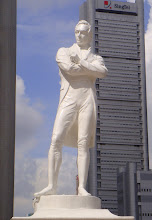For the first Sunday and Monday that month, as thousands flock to the banks of the Siem Reap river, Cambodia’s favourite form of tourist transportation suffers a shortage. For those days at least locals happily embrace capitalism’s theory of supply and demand, and a trip into the city centre inflates 100 percent, from US$1 to US$2!
For most of the year, the Tonle Sap empties into the Mekong River. However, when the rainy season arrives in June, the Mekong rises, reversing the flow to dump water into the lake, increasing its size ten-fold. When the rainy season ends in November, the Mekong drops once more, allowing the current to reverse again, emptying the excess waters of Tonle Sap back into the Mekong.
The colours are amazing as the canoes, and crew, decked in the insignia of their team. Crews comprise about 40 rowers, all resplendent in their livery.
The footpaths are filled with hawker food. Some, like the French bread and pate rolls, a regular found in Indochina, looks delicious. The same can not be said for some of the fried insects, and what looks like rotting Yong Tau Foo, which has spent way ftoo long in the sun.
Edging my way to the front of the river bank, in order to take some pics, somehow a gap miraculously opens up in front, perhaps the only one left on the shores edge. I get as comfortable as a can.
Within minutes Dara, who is sitting with his wife, starts chatting to me, explaining that everyone has their favourite team and, like anywhere in the world, there would be a few bets placed on the races.
It’s interesting to watch the rowers. Some, who have obviously been practicing for months, and their faces are twisted in concentration; their bodies are racked with effort and, in some cases, what looks like pain. Others appear to be out for a bit of fun in the sun, relaxed and smiling.
Getting home after, well I decide to walk, the streets are packed and do I really want to haggle with a tuk tuk driver again?
Blocka













